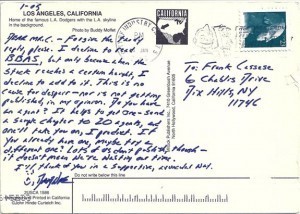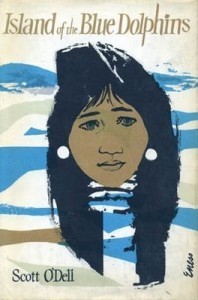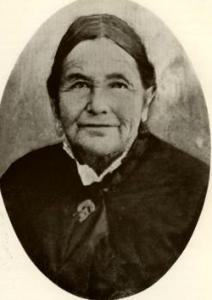The Paris Review's Blog, page 876
November 6, 2012
Mark Your Calendars: Plimpton! at DOC NYC
Writer, thinker, bon vivant, sportsman, actor, participatory journalist extraordinaire, and editor of this magazine: George Plimpton was a figure to be reckoned with. In a new documentary, Plimpton! Starring George Plimpton as Himself, the great man gets his due.
Plimpton! Movie Trailer from Tom Bean on Vimeo.
On Sunday, November 11, Plimpton! comes to DOC NYC. Join the filmmakersTom Bean and Luke Poling, along with Paris Review editor Lorin Stein, and Terry McDonnell, for a special screening of the film. (Also showing Wednesday, November 14.) Get your tickets here.
November 5, 2012
Bonfire Night
Remember, remember the fifth of November
Gunpowder, treason and plot.
I see no reason why gunpowder treason
Should ever be forgot.
Guy Fawkes, Guy Fawkes,
'Twas his intent
To blow up the King and the Parliament.
Three score barrels of powder below,
Poor old England to overthrow.
By God's providence he was catched
With a dark lantern and burning match.
Holloa boys, holloa boys,
God save the King!
Hip hip hooray!
Hip hip hooray!
A penny loaf to feed ol' Pope.
A farthing cheese to choke him.
A pint of beer to rinse it down.
A faggot of sticks to burn him.
Burn him in a tub of tar.
Burn him like a blazing star.
Burn his body from his head.
Then we'll say ol' Pope is dead.
Hip hip hooray!
Hip hip hooray!
A Letter from Van Gogh
We would frankly have been delighted to received correspondence from any of these luminaries, time-travel permitting. But for sheer beauty, Vincent Van Gogh’s letter deserves special mention.
Via Divine Hours
Eyeballs Left Standing
The Alligator People (1959).
The Invisible Man, neat freak by design, was known to fuss over the grit beneath his fingernails. According to British horror historian Denis Gifford, dirt threatened transparency. In A Pictorial History of Horror Movies, Gifford sees “a pair of disembodied trousers skipping down the lane to ‘Here We Come Gathering Nuts in May.’” The hands are clean.
For Gifford, the devil was in the details, if not in all of us: “We who came to stare only see ourselves.” Or through ourselves. He notes the shabbiness of Mr. Hyde’s tailcoat, and the yak-hair transplants on the Wolfman’s face. Also important: “a sinister sofa,” controlled by an underground switchboard operated by a man in a wig. And Frankenstein’s homunculus, taken out by a falling crossbeam no fewer than four times in his film career.
These images were filtered through words I’d just discovered. Until last week, I had never actually read the most important book of my childhood. The text had gone unseen. My mother had given A Pictorial History of Horror Movies to my brothers as a Christmas gift in 1973. She still cheerily refers to it as “that book with the girl with the hatchet in her head.” I was forbidden to read it but was never told I couldn’t look at it. Read More »
November 2, 2012
In Search of Lost Time: An Illustrated Panorama
The first European in my mother’s family to set foot in North America was a short, olive-skinned Frenchman from one of the outermost communes of greater Paris. He fled France amidst the turmoil following the revolution of 1848 for the gold fields of California and chased an elusive mother lode all the way up the coast into Alaska before giving up. He was an exact contemporary of the early Impressionists, and a full generation older than Marcel Proust. He spent the final years of his life a broken man, having outlived two of his three children, and subsisting on a homesteaded vineyard in the Santa Cruz mountains long before California wine was a profitable industry.
The only relic of him my family still possesses is a stack of letters spanning thirty years from his sister, Geneviève, imploring him to come home. A Parisian relation visiting his cabin in the 1890s noted that he wept at the thought of his homeland. As far as I know, he shares no direct connection with Proust, but the world he came from is Proust’s world, and seemed to me, as a child, enchanted when contrasted with the drab California suburb I grew up in. Sadness is a condition that can ripple across many generations, and if his was earned through the loss of a time and place, mine was inherited from the ruined family that struggled to make sense of his mournful legacy.
But his still-hopeful departure from Le Havre for the new World in 1852 would have been immediately preceded by a train ride from Paris through Normandy – a train ride through the same countryside that left Proust enraptured on his childhood sojourns to Illiers-Combray. What follows is an illustration of that train ride, as recounted in Proust’s sprawling lifework, À la recherche du temps perdu. This passage occurs in Part Three of the First Volume and constitutes but a few rich, supple pages.
Jason Novak works at a grocery store in Berkeley, California, and changes diapers in his spare time.
The Presidency, in Verse
We may know their takes on climate change, on reproductive rights, on economic policy. But what of poetry? The Poetry Foundation has investigated the poets the presidents loved, and presented their findings in an illuminating and timely post. Just a few pairings:Read More »
Falling Overboard
Illustration by Madzia Bryll, a fellow member of the crew.
At first, I couldn’t sleep on the ship. At night, bunked beneath the waterline, I put my hand against the wooden hull and imagined dark water on the other side pressing back. I lay awake holding my breath, picturing the route I would swim through a maze of cabins and hatches if the ship went down. In port, Bounty had looked tremendous: one hundred and eighty feet long, three masts stretching a hundred feet into the sky, and a thousand square yards of canvas sails. But underway, with ocean spreading toward horizon in every direction, she was small, and inside her I was even smaller.
I had lost my job and my marriage when I saw Bounty for the first time. I wanted to stowaway, cast off, and leave the ruins of my life behind—and Bounty let me. Yet I left far more than grief on land; what mattered at home—education, achievements, appearance—was irrelevant at sea. It was unsettling to abandon all that I thought defined me. I sat in the galley with the other deckhands and wondered what they understood from my face. I was uncertain of what remained.
I Sent My Book to David Foster Wallace and All I Got Was This Lousy Postcard
“Why did he choose to send me a postcard? Simply because it’s a few cents cheaper than mailing a letter in an envelope? Was it just sitting around when he was looking for something to write on? Does he buy stacks of these postcards for the express purpose of responding to random fans? And worse, does he write this same prepared response to every letter?” Frank Cassese on hearing from DFW.
An unpublished Truman Capote story has come to light and will be published later this month.
“Within the world of the Thurber dog there are many different specimens and varieties.”
“I don’t know why Hollywood is fascinated by my book when they never care to film it as I wrote it.” Authors respond to adaptations of their work.
“For Halloween, a pointy hat, fake hair and a broom [make] a witch’s outfit.” And other wisdom from Pippa Middleton’s literary debut.
November 1, 2012
Island of the Blue Dolphins Cave is Found
The Island of the Blue Dolphins was my home; I had no other.
After more than twenty years of searching, a Navy archaeologist believes he has found the cave on San Nicolas Island occupied by The Lone Woman—better known to many as the protagonist of Scott O’Dell's 1960 classic, Island of the Blue Dolphins. The Newberry Medal–winner was based on the true story of a Native American woman left behind when the rest of the Nicoleño tribe was evacuated from the channel islands by missionaries after the population was decimated by Russian fur traders; one story has it she returned to the island to search for her missing child.
Juana Maria, taken at the Santa Barbara Mission.
Read More »The Human Centipede; Or, How to Move to New York
 I moved to New York for graduate school. I was in my mid-twenties, and what do we do when we’re in our mid-twenties? We move to New York with very little money and very high hopes. Like many, I entered into the nexus of love and wealth and fame looking for a piece of the glistering and transmutable dream itself. In short, I was here to write a book.
I moved to New York for graduate school. I was in my mid-twenties, and what do we do when we’re in our mid-twenties? We move to New York with very little money and very high hopes. Like many, I entered into the nexus of love and wealth and fame looking for a piece of the glistering and transmutable dream itself. In short, I was here to write a book.
But standing on the threshold of this dream, I began to panic. I thought, I have arrived, and thought nothing of how far I had to go or what it would take to get there. I could see downtown Brooklyn from my window, and most days my impression of New York came from inside my bedroom. Outside, the sidewalks were cobbled and uneven, and the houses and apartments looked like replicas of the houses and apartments I’d watch on TV.
I’d lived in Brooklyn less than a month but had already settled into an inexplicable depression I’d nicknamed The Darkness. I couldn’t leave my apartment, except to attend class in Manhattan two nights a week. Sitting on the F train, I felt sure no one could lived in New York without a constantly replenished supply of antidepressants, courtesy of some kind of pharmaceutical Fresh Direct. Read More »
The Paris Review's Blog
- The Paris Review's profile
- 305 followers














